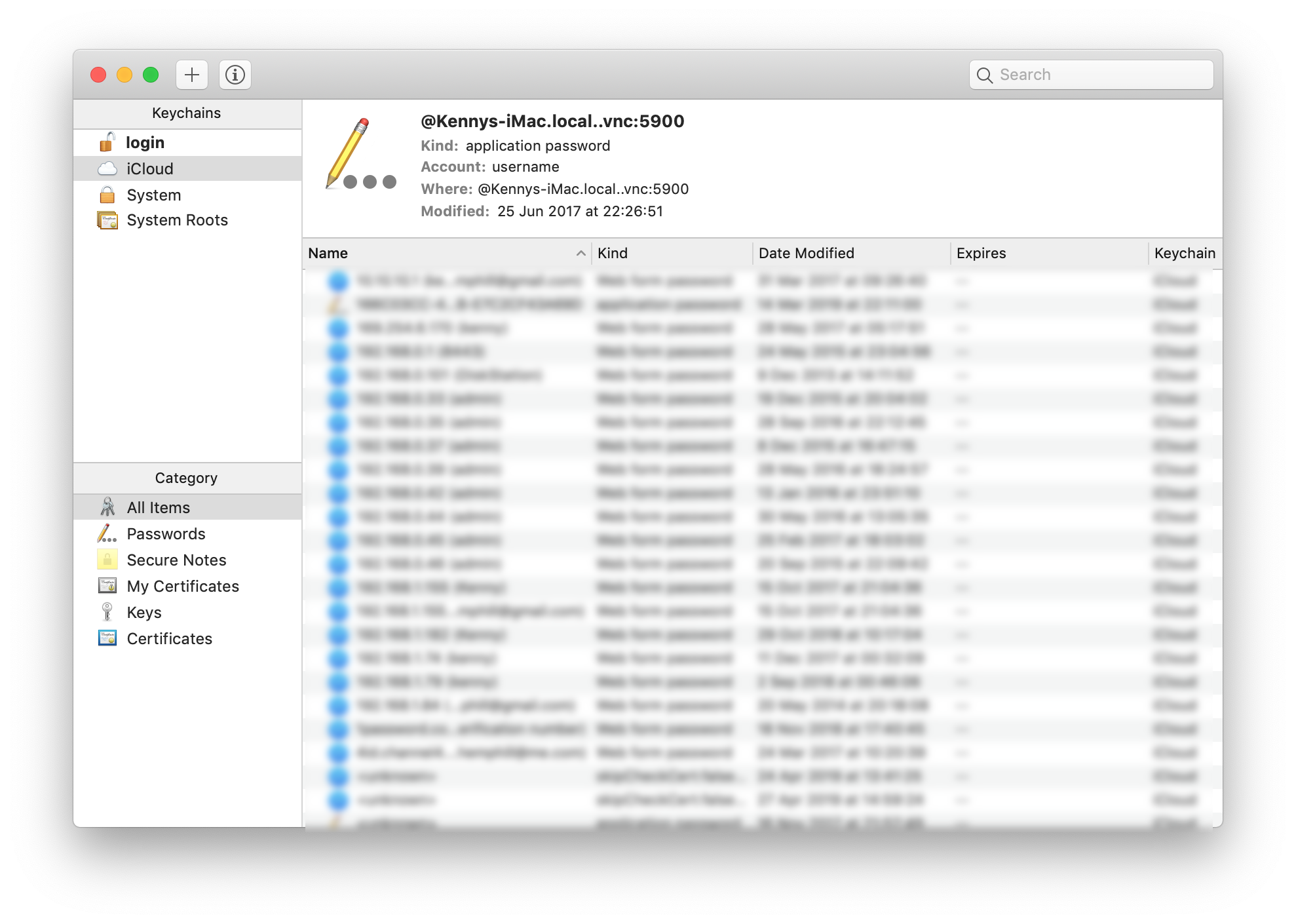
/cdn.vox-cdn.com/uploads/chorus_asset/file/22331105/Screen_Shot_2021_02_25_at_10.36.30_AM__1_.png)
ACCESS KEYCHAIN ON MAC MAC OS X
The obvious question is, "How did these items get here?" They wereadded by Mac OS X applications. For an account that has been using thekeychain to store file server passwords, HTTP authentication information, and soon, the Keychain Access window should look similar to that shown in Figure3.32.įigure3.32 The Keychain Access window displays a list of stored passwords andother information. Launching Keychain Access displays the contents of your defaultkeychainnamed login. User keychains are stored in ~/Library/Keychains, whereas Globalkeychains are located in /Library/Keychains.

An example of the usefulness of this featureis creating a keychain with corporate login data for intranet file servers thatshould be available to everyone. A Global keychain can be created by an administrator and sharedto the other users on the system. In addition to User keychains, Global keychains are accessible by all userson the system. Thinkof the keychain as a database of your most sensitive information, all accessiblethrough your Mac OS X account password. Additional User keychains can be created tostore specific information, such as credit card numbers, PINs, and so on. Keychains and Keychain Scopeīy default, all users have their own keychain named login.
ACCESS KEYCHAIN ON MAC HOW TO
Read how to add new keychains in the "Managing Keychains" sectionlater in the chapter. Sensitiveinformation is best placed in a secondary keychain with a different password otherwise, a single compromise of your account unlocks access to all yourinformation. The default keychain is unlocked by your account password.


 0 kommentar(er)
0 kommentar(er)
